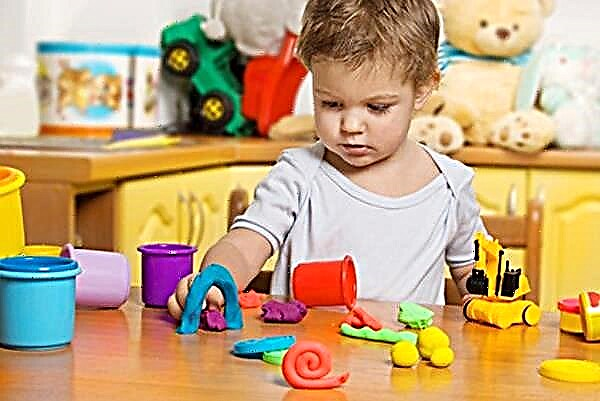
Nature gave men the opportunity to be fertile all the time, to be able to fertilize a woman on any day of any month. But women cannot conceive a child when they want. To do this, you need to choose a favorable time - the fertile period.
What it is?
Fertile is the period of the monthly female cycle in which conception and pregnancy are most likely. During the female cycle from menstruation to menstruation, the onset of pregnancy is possible only for a limited period of time, while the fertile days pass.
For conception, two sex cells are required - a male and a female. Spermatozoa are produced in men continuously, they are always ready. But with the female egg, everything is much more complicated. - it is formed in a single copy in a cycle, it reaches readiness for fertilization only by the middle of the cycle and lives very shortly - about a day.
Therefore, the ability to determine your fertile period will help women who are planning to conceive to get pregnant faster, and those who are puzzled by contraception issues will help reduce the risks of an unplanned pregnancy.


The process of maturation of the egg begins after the end of the next menstruation. But in order to become available to sperm, it must leave the follicle in which it is located. It usually takes more than 10 days to ripen. Then, under the influence of hormones, the follicle bursts and the oocyte is released. From this moment, called ovulation, during the day the female reproductive cell retains the ability to fertilize.
Ovulation itself is considered the peak of the fertile period when conception is most likely. But the period itself includes not only ovulation and the day after it, but also several days before and after the release of the egg.
Fertilization itself occurs during the ovulatory period, but sperm in "alert" can stay longer than female germ cells, they can survive well in the female genital tract and fertilize immediately after she leaves the follicle.
therefore the period of sperm life is necessarily taken into account, and it averages 2-4 days. And if unprotected intercourse was performed before ovulation during this period, then the spermatozoa can already wait for the oocyte to exit.
It is also difficult to predict exactly how long the egg will live - some oocytes demonstrate a rather impressive lifespan - up to 36 hours, and therefore after ovulation it is also customary to add a couple of days just in case. In this way, the fertility period in each month in which ovulation occurs lasts about 7 days. Only at this time is a woman capable of conceiving and procreation.
There is another concept that explains the essence of the term "fertile period". If we consider the female ability to reproduce not within one cycle, but within the whole of her life, then such a period is considered the time from the onset of puberty (from the onset of menstruation in girls) to the onset of menopause. The average duration of the fertile period of life in women is 15-55 years old.


Timing determination
There are several common and popular ways to find out when a particular woman is in her fertile period. This can be done in different ways.
By calendar
All you need is a calendar and a pencil. The second half of the female cycle always lasts more or less the same amount of time - 14 days plus or minus a day. Knowing this will help determine the estimated day of ovulation. To do this, you only need to know the duration of your cycle. If it is regular and lasts a certain number of days each month (day errors are quite acceptable), then from the duration of the cycle, you need to subtract 14 and add 4 days before and after the date obtained - these will be the boundaries of the fertility period in one cycle.
Example: a woman's cycle is regular and stable, lasting 28 days. 28-14 = 14. This means that ovulation should be expected on the 14th day of the cycle. And the period of fertility (taking into account the viability of sperm) starts from 10 days and ends on 17-18 days of the cycle. Remember that the first day of your cycle is the first day of your period by default.
If a woman has an irregular cycle, which may be shorter or longer, then it will be quite difficult to determine the fertile period according to the calendar - the error will be too large. Experts recommend taking the duration of the last 4-6 cycles for calculationsto calculate the arithmetic mean and average duration. Then they count according to the same principle as in the regular cycle.
You should be aware that the cycle under the influence of a wide variety of circumstances in a woman can shift, ovulation can occur later or earlier, and the calendar method does not take into account this possibility. Therefore, it is not considered reliable and accurate.
If the boundaries of the fertile period are convenient for you to count on the calendar, make sure that the second, more accurate method can be used to confirm your calendar calculations.


By basal temperature and discharge
This method is called the symptothermal fertility recognition method, and its accuracy is much higher than that of the calendar method. The bottom line is that it is necessary to carry out daily measurements of basal temperature according to all the rules, monitor the nature, viscosity and amount of vaginal discharge and monitor the position of the cervix. It is more acceptable for women with irregular cycles, for lactating women in the first year after giving birth.
If a woman's basal temperature dropped, a dip appeared on the graph, and the discharge became abundant, viscous, like raw chicken egg white, the cervix rose - this means that the fetal period has begun. Additionally, women experience increased sexual desire, a slight increase in the mammary glands and an increase in their sensitivity.
It is not difficult to determine a period favorable for conception by this method, but this requires discipline and diligence from a woman - temperature measurements and changes in discharge should be noted daily, without missing a day.


Tests
There is a special category of pharmacy tests - ovulation tests. They are easy to use at home, the main thing is to follow the instructions. There are test strips that are immersed in urine for a few seconds, there are cassette and inkjet tests. There is a category of more accurate - electronic urine tests. They work the same way: the reagent catches a certain excess of the concentration of luteinizing hormone in the woman's urine, which rises a day before ovulation.

There are also mini microscopes that allow you to examine saliva and vaginal secretions. Their action is based on changes that cause estrogen in the body, which also rises before ovulation. Saliva begins to crystallize under its influence when it dries in a very specific way.


Folliculometry and hormonal profile tests
Ultrasound examination of the ovaries makes it possible to accurately determine the quantity, quality, size of follicles, track the growth of the dominant follicle and accurately determine the time of ovulation. Also, this method allows you to assess the fertility of a woman as a whole - to make a forecast of her fertility, assessing the ovarian reserve.
Additionally, blood tests for hormones can be done - a decrease in FSH, an increase in LH and estrogen indicate the approach of ovulation. The fact that ovulation has already passed is indicated by an increased content of progesterone.

Chance of getting pregnant
On the days of fertility, there is a chance of getting pregnant, but no one can guarantee that pregnancy will definitely come. It all depends on the state of health of a man and a woman, on their age.
The most realistic chances of conception with properly conducted unprotected intercourse on the day of ovulation in women who are between the ages of 20 and 30, provided that they are healthy. This probability is theoretically equal to 30-33%, although reproductologists say that pregnancy occurs in fact only in 11% of such cases.
After 30 years in women, the number of menstrual cycles begins to increase in which ovulation does not occur, the level of sex hormones gradually decreases. Therefore, the likelihood of conceiving a child within one cycle during the fertile period is also reduced. For women in their 40s and older, even if they can accurately calculate and calculate the beginning of the fertility period, the probability of pregnancy on favorable days does not exceed 3-6%.
There are ways to increase fertility and the chances of conception. This is a healthy lifestyle, no bad habits, a normal night's sleep and a balanced diet. Planners should have sexual intercourse not every day, but every other day during the entire fertile period (on the day of ovulation - required).
If the goal is to protect yourself from unwanted pregnancy, it is during the fertile period that special attention should be paid to contraception.

You can clearly learn how ovulation occurs from the video below.



